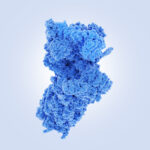
Visible light-induced photochemistry for pharmaceutical active compounds synthesis
Light can be considered as an ideal reagent for designing environmentally friendly chemical synthesis. Combining photochemistry within flow conditions pave the way to further process intensification.
Discover in the latest Organic Letters issue, how SEQENS in collaboration with Géraldine Masson, have developed a more greener approach for the decarboxylative borylation, leading efficiently to a- and b-amino-boronamides, an important class of compounds in medicinal chemistry. Indeed, for illustration:
- Bortezomib and Ixazomib (inhibitors of 26S proteasome) are used for the treatment of multiple myeloma.
- Talabostat, a dipeptidyl boronic acid that inhibits cancer-affected serine proteases
Within the optimal conditions, a large panel of aminoacid derivatives were tested and transformed within satisfactory yields.
By carefully selecting the adequate ligand, solvent and operational conditions, we have performed visible light-induced reaction on redox-active esters derivatives under practical and environmentally benign procedure:
- clean reaction, absence of by-products
- industrial relevant synthetic approach
- easily implemented in flow chemistry
- practical method for preparing trideuteriomethyl boronic acid derivatives
Congratulations to all the team for this fruitful collaboration in our CNRS-SEQENS joint Laboratory : HitCat Lab.
> Discover the full publication on ACS Publications <
Visible-Light-Driven Decarboxylative Borylation: Rapid Access to α- and β-Amino-boronamides
Andrea Serafino , Hugo Pierre , Franck Le Vaillant , Julien Boutet , Gérard Guillamot , Luc Neuville , and Géraldine Masson*
Abstract
In this study, we described a two-step process involving an efficient visible-light-induced decarboxylative borylation of α- and β-amino redox-active esters with bis(catecholato)diboron, followed by transamination with 1,8-diaminonapthalene (DANH2). A series of boronamides were obtained in moderate to excellent yields in this one-pot procedure. The photochemical process proved to be very efficient even when conducted under flow conditions with shorter reaction durations and scalable synthesis of DAN boronates.




